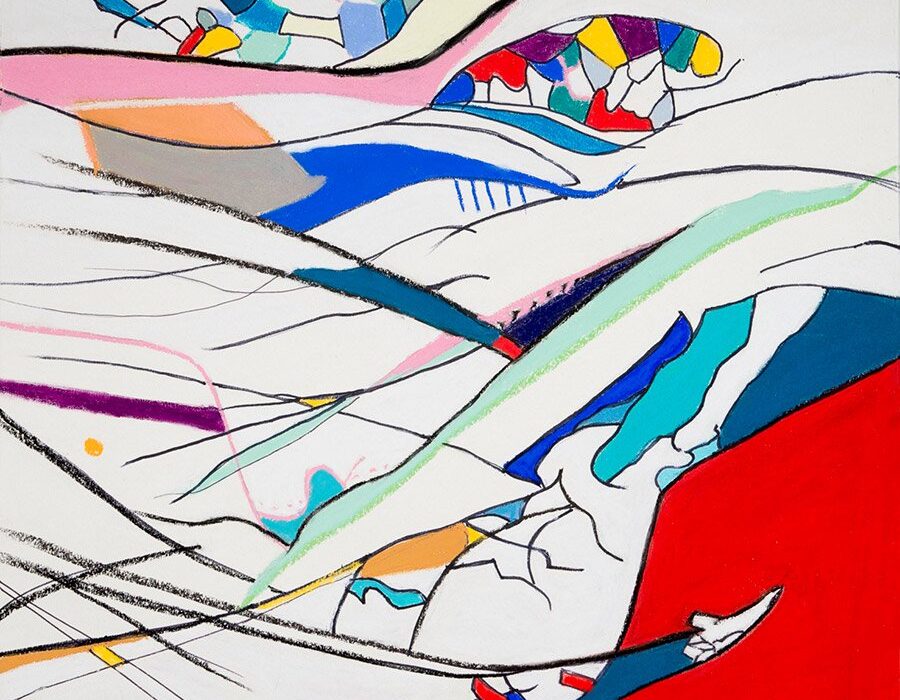Marie Mellott’s versatility as an artist has won her many accolades over the years. Paintings, drawings, mixed media pieces as well as poetry and performance art have all been part of her repertoire. I’ve seen much of her work, which for me is quite inspirational. It shows me that an artist does not have to limit themselves to one or two media forms. She’s done a lot and has done it well.
You are currently represented by Gallery 218 in Milwaukee. How did that come about?
When I moved back to Milwaukee from Kentucky, I looked for people to connect with from the past. Judith Hooks of Gallery 218 in the Marshall Building, Milwaukee, asked me for some abstract drawings. She liked them, and through friendship, I found a wonderful opportunity. I am there since 2022, alongside some talented and varied artists.
Your collaboration on the piece, I Can’t Fathom It, is perhaps your best known and most powerful. Explain what it’s about.
I Can’t Fathom It was created out of a response to a personal tragedy and the war in Bosnia in 1992. I collaborated with my former husband, Yehuda Yannay. I did the visuals, and he simultaneously did the music for cello. Repetition of images and the human voice of the cello captured the unfathomable violence of rape. The piece has been viewed several times at universities, concerts, art venues and privately. It is on YouTube under both my name and Yehuda’s.
You were interviewed by Romanian National Radio in Bucharest in 1993, as well as MSOE radio in Milwaukee in 1997. Tell us about those interviews.

Subscribe to our free, daily e-newsletter to get Milwaukee’s latest local news, restaurants, music, arts and entertainment and events delivered right to your inbox every weekday, plus a bonus Week in Review email on Saturdays.
My interview with the Romanian Radio was about my collaborations with Yehuda Yannay. MSOE invited artists of various backgrounds to record sounds of nature. Yehuda and I recorded sounds of the blue heron and our conversation about the experience.
You’ve been a member of various art organizations, such as MARN, Wisconsin Visual Artists, Museum of Wisconsin Art, and Walker’s Point Center for the Arts. How have these groups enhanced your career?
You’ve been in many shows over the years. How do you decide what to create and enter?
I usually choose a series of related drawings for a solo show. For example, “Tripping Over Insects” was my theme for a show at Saint John’s on the Lake Gallery in Milwaukee. I have also shown a series of portraits there. Some shows have a theme, which dictates what I will explore.
In addition to these experiences, you were an artist in residence in Germany.
Yes, in 2006, I stayed as a guest artist at the Denkmalschmiede Hofgen Foundation in Kaditzch, which was formerly Eastern Communist territory. I created six drawings about the Mandrake plant, and the superstitions around the plant. Folklore has it that the Mandrake plant had the ability to impact wisdom. It was also deemed a hallucinogenic plant. Some sources called it, “brain thief”, claiming it grew from the brains of dead thieves, or those hung from the gallows.
What would you say keeps you engaged and motivated to continue to create?
Creating gives me a wonderful life’s purpose. I love studying subjects, shapes and colors. I am presently exploring the beautiful colors of soft pastels.

